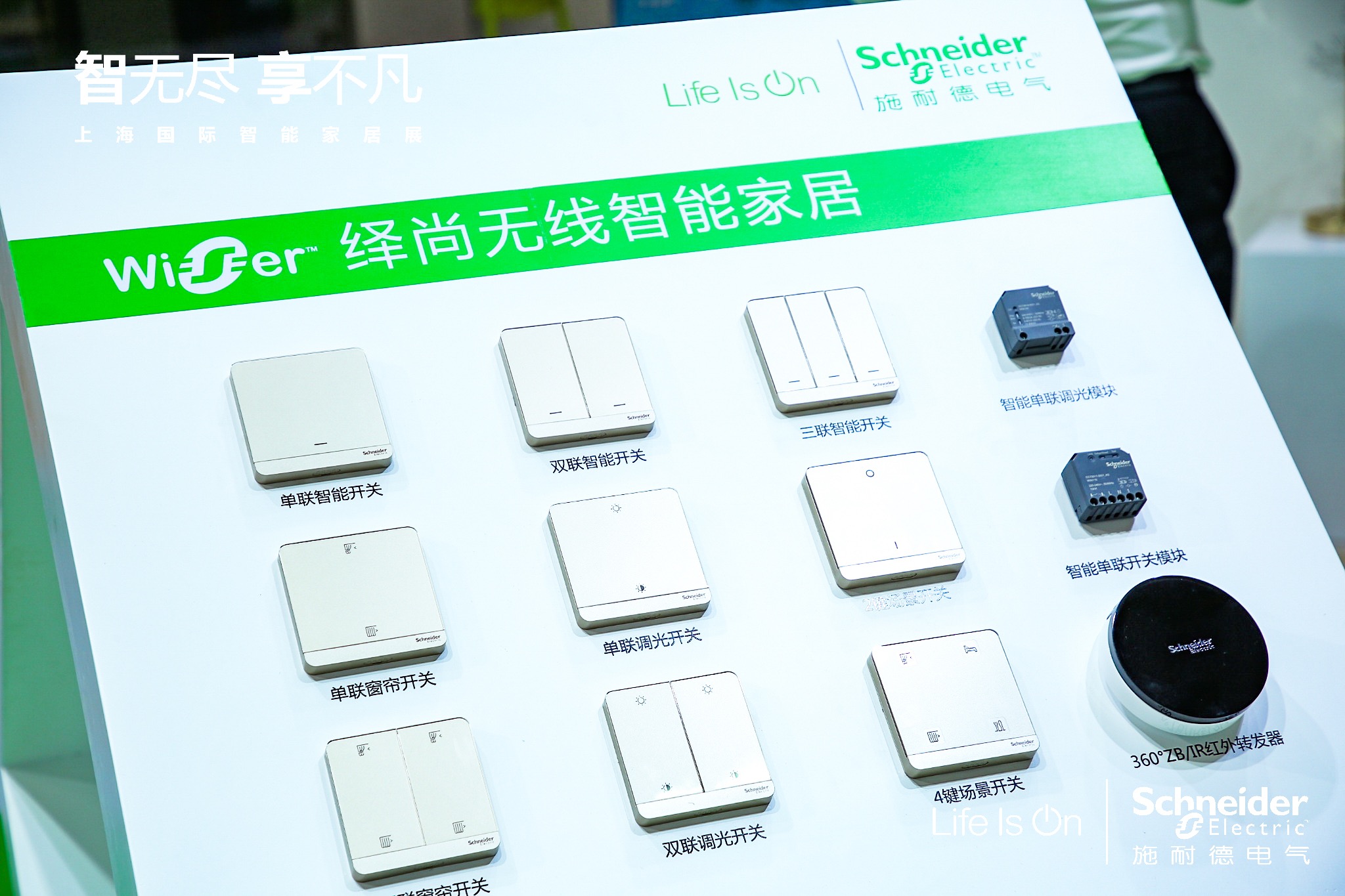Open and compatible, Schneider Electric develops genes in a win-win “friend circle”.

The market research agency IDC predicts that the compound annual growth rate of the Internet of Things from 2015 to 2020 will be 15.6%, and the global market size will reach 1.29 trillion US dollars in 2020. And the number of global IoT devices will show a rapid growth trend. In the next few years, such devices will surpass smartphones to reach 30 billion.
At the same time, the application of the Internet of Things in various fields has expanded rapidly, extending to different industries, and has also led to the rise of the application layer market.
First is the huge potential of the Industrial Internet of Things. According to Schneider Electric’s “Global Digital Transformation Revenue 2019 Report” released in February last year, using the Internet of Things, digital transformation can significantly reduce the operating expenses of enterprises (OpEx). As a result of digital transformation, enterprises and institutions can save an average of 24 % Of energy consumption. From IoT tracking to automated production lines, energy efficiency management and automation across the entire value chain can increase productivity by 50%.
As a Fortune 500 company, Schneider Electric is a leader in digital transformation in areas such as energy and automation. Digital products and solutions cover the five terminal markets of buildings, data centers, infrastructure, industry and households, and have global brand influence.
Today, this industry giant has begun to further accelerate and deepen the layout of its smart home business. According to research agency Gartner, the number of smart devices in general households will exceed 500 by 2022. According to statistics from IDC, the global smart home market is expected to reach US $ 277 billion by 2022.
In addition to the huge number of devices and market size, homes are closest to users, and smart homes can combine daily life with the Internet of Things. Has rich application scenarios. It is not difficult to understand why many technology giants focus on the smart home market.
Different genes have different strategic plans for the same track. As a century-old enterprise, Schneider Electric has some new thinking and strategic practices for smart homes. What new opportunities does it see in this area? What new challenges are we facing?
The “friend circle” era of smart homes
Around 2017, the explosion of smart speakers ushered in the 1.0 era of smart home, but it also increasingly exposed the shortcomings of single product intelligence. Different brands lack consistent standards, and consumer incompatibility results in poor user experience. The challenge of smart home is no longerIt’s a technical issue, more an ecological one. From smart single products to whole house intelligence, it is undoubtedly the new trend of smart home development.
Based on the status quo of the industry, and Schneider Electric ’s successful experience as a multinational company in China through collaborative development to win success and promote industrial development, Schneider Electric proposes the concept of “a circle of friends” to collaborate with the IoT enterprise-level platform in the industry. Actively build an open ecosystem and smart home ecosystem. “From homes close to users to macro areas such as infrastructure, we can achieve comprehensive coverage of our business ecosystem.” Said Ma Sitao, vice president of global smart home systems at Schneider Electric.

Ma Sitao, Vice President of Schneider Electric Global Smart Home System
In the process of laying out the field of smart home, the cooperation between Schneider Electric and AIoT platform Tuya Smart is an in-depth exploration based on the concept of “friend circle”. “We hope to build a more open, flexible, and easy-to-link system, so that the linkage of scenes can produce value.” Ma Sitao said that the consistency of the concept with Tuya Smart on the intelligent platform has promoted cooperation between the two parties.
In December 2019, the two parties cooperated on the Wiser smart home automation platform in Asia. It is worth noting that Tuya Smart is the first IoT platform partner of Schneider Electric’s Asian business, and the two parties have conducted in-depth cooperation on smart real estate and smart products.
Tuya Smart, founded in 2014, is a global AIoT platform that empowers enterprises to be intelligent from three aspects: App, cloud and intelligent modules. The products enabled by Tuya Smart Technology are collectively called PBT. At present, there are more than 90,000 models of such products in 220 countries and regions. These products can be interconnected across categories and brands, and all PBT products can be controlled with the same App.
In Ma Sitao ’s view, Tuya Smart provides a highly efficient IoT platform. This cooperation allows Schneider Electric to focus more on product, analysis and service professional capabilities, and simultaneously solves the problems The efficiency of interconnection and interoperability, and the maturity of Tuya Smart’s global business as well as a large number of products, have made Schneider Electric see its potential “friends.”
“Schneider Electric provided years of in-depth understanding of B-side, graffitiAs a platform, it implements a powerful implementation capability. It is a bit like an operating system such as Windows. There is no need for everyone to develop a platform. It can be used to develop new application scenarios. “Ma Sitao said.
The two parties have carried out in-depth cooperation in the fields of cloud, platform and app: more than 30 products of Schneider Electric Wiser series have been connected to Tuya Cloud, including electricians, sockets, switches, infrared remote controls, sensors, etc. In the cooperation, Wiser smart home gateway products first connected to Tuya Cloud, and then used the gateway to control other Wiser series products connected to the gateway. “These products can be connected with up to 90,000 ecological series products behind PBT, which broadens the possibilities of Wiser smart home.

Schneider Electric’s Wiser smart home automation platform, which cooperates with Tuya Smart, uses the “Works With Wiser” mechanism to flexibly integrate the products and functions of third-party partners to provide users with a consistent user experience. In addition, Wiser integrates Schneider Electric’s advantages in energy management, security, lighting control and temperature control on a single platform to create new value for users. Wiser Smart Home also establishes a comprehensive installation and configuration experience for partners such as developers, system integrators and electricians, and realizes end-to-end overall solutions from configuration, selection, and installation.
The post-connection era, the siege defense of the “hundred-year-old shop”
As various connection technologies mature, the Internet of Everything is no longer a nightmare. When the problem of connectivity is solved, the smart home may have come to a truly intelligent stage.
The Internet giants who have been on the smart speakers earlier have begun to realize this. In December last year, smart home equipment companies such as Amazon, Apple, and Google, as well as Schneider Electric, IKEA, NXP, Samsung SmartThings, and Signify (Philips Lighting) under the Zigbee Alliance announced the joint establishment of “Connected Home Over IP” (referred to as ” CHIP “) plan to develop and formulate a set of smart home connection standards based on the IP protocol.
The alliance aims to improve the compatibility of smart home devices so that users no matter which smart home they buyProducts can be used with existing smartphones or voice assistants to obtain a barrier-free experience. As Ma Sitao said: “The” post-connection era “is the main battlefield of smart homes. It does not make sense for everyone to focus on the connected war. Smart devices will generate value and reflect their advantages after they are connected. / p>
In today’s smart home market, traditional manufacturers, Internet manufacturers and start-ups are chasing after you. So how does Schneider Electric’s technology and business break through in the fierce market competition?
Undoubtedly, buildings, power distribution, and other businesses have been their advantages for many years. According to Ma Sitao, Schneider Electric has accumulated a lot in these traditional fields, such as sensors, switches, sockets, security sensors, room temperature control, and energy management. In addition, Schneider Electric will continue to focus on the edge control of smart homes. “We put edge computing in the same position as cloud and connected devices, and we have a global layout.”

Graffiti Intelligent Founder and COO Yang Yan participates in Schneider Electric Pulse Summit